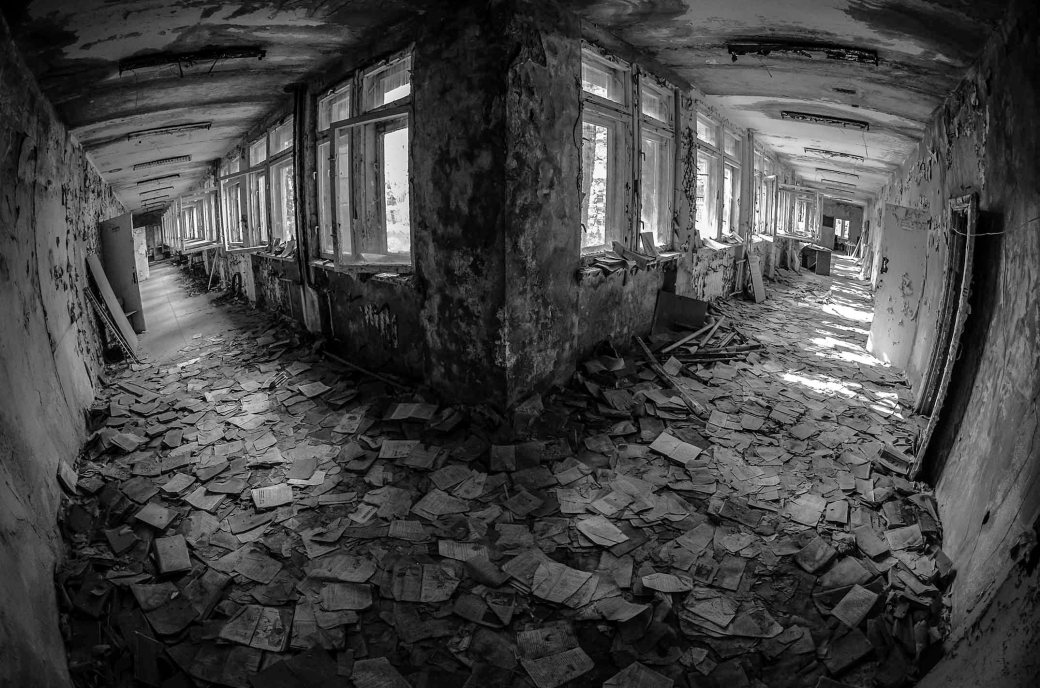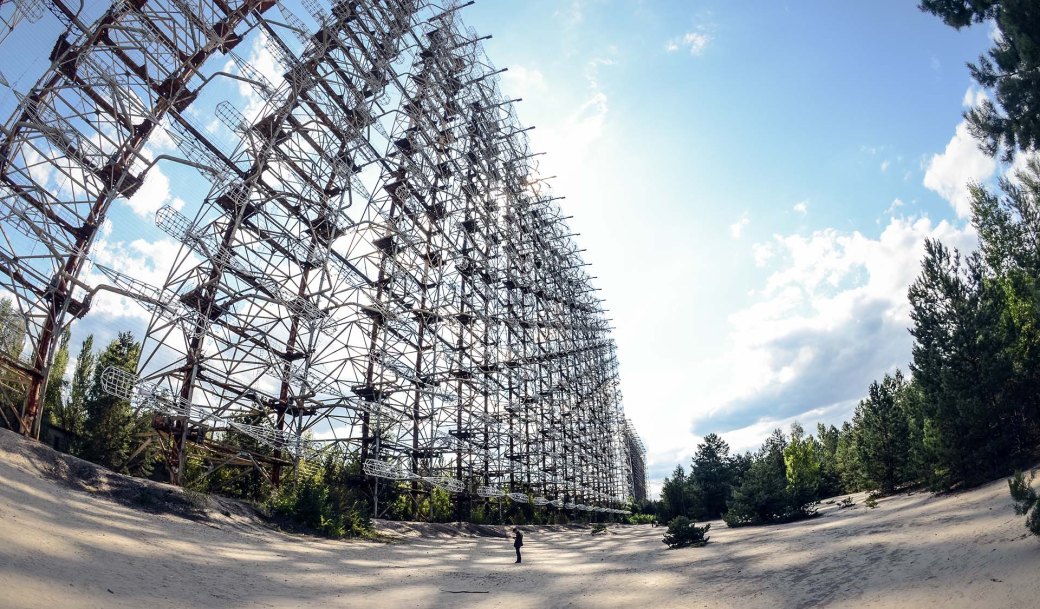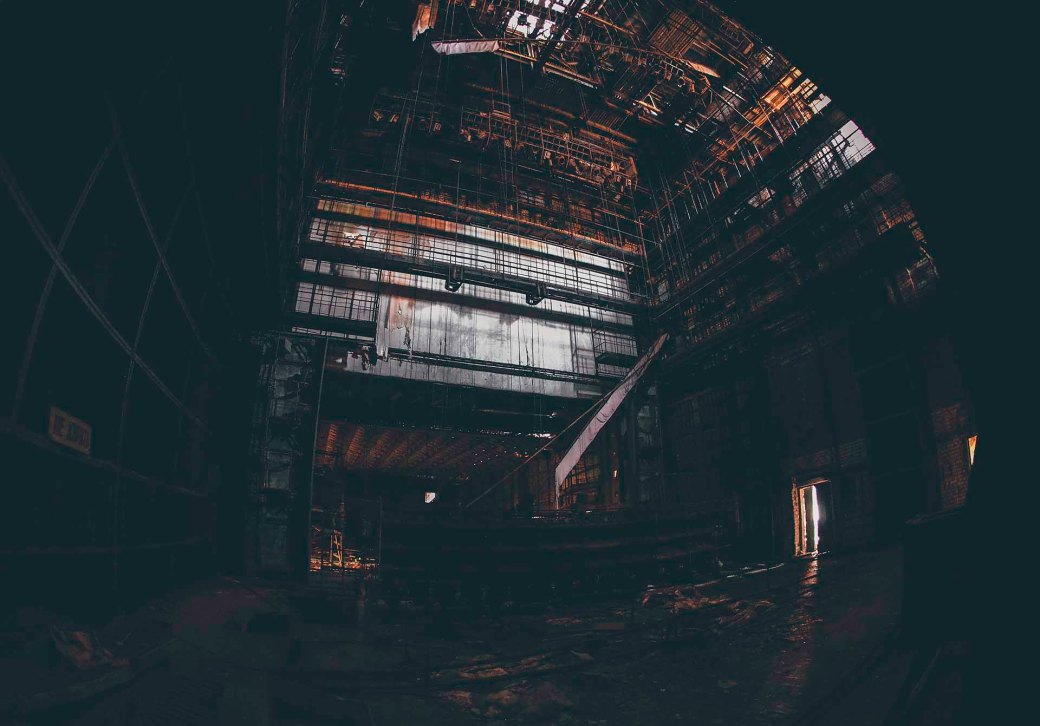My son went to Kiev and Chernobyl this Autumn, and I asked him if he would share some of his photos and impressions on this blog. He said yes, and I am happy to have him here once again. Hope you will enjoy his work!
I’ve wanted to visit Chernobyl for a long time. The combination of two of my biggest interests; urban exploration and history, took me here.
The worst nuclear disaster in history took place in April 26th 1986. A disaster releasing an amount of radioactivity equal to 400 Hiroshima bombs.
Pripyat had 50 000 citizens who were evacuated by bus, roughly 1,5 days after the accident. They were given false promises of coming back – and so they left everything, even their beloved pets.
Every corridor in the buildings I visited felt endless. Seemingly reaching for the end of the world.
The Middle School was modern and well equipped with both music halls and sports facilities. They even had a large storage where they kept child-sized Soviet gas masks, in case of an emergency..
This was one of five secondary schools in this town. Hundreds of children once ran up and down these corridors. It almost felt like all of these notebooks, documents and files tried to chase after their owners when they left.
There are an endless amount of houses out in the Chernobyl woods. Some hide treasures, but most of them are just husks. Although they are just as beautiful.
The Duga Radar was a so called ”over-the-horizon” radar that was supposed to detect missiles and airstrikes. Soon, it got the nickname ”The Russian Woodpecker” because of the repetitive tapping noise it caused at 10Hz on shortwave radios.
The radar itself is enormous – towering 150 meters high and around 700 meters wide.
We managed to sneak past security and get a peek at cooling tower #5. It was supposed to pump large amounts of water around the reactor for cooling, but the tower was never finished after reactor #4 exploded.
The ”Palace of Culture Energetik” was a large community center for the citizen of Pripyat. ”Energetik” is a wordplay – meaning both ”energetic” and ”power plant worker”. The purpose was to have a wide range of recreational activities including a library, gym, swimming pool, dancing halls and the very theater in the image above.
I am barely even scratching the surface of the stories and the history of Chernobyl. If you are interested in learning more, I recommend the TV Series called ”Chernobyl” on HBO. They portray the disaster in an incredibly powerful and emotional way, while staying close to the facts and real life stories. I also recommend the book which the show is based on: ”Voices from Chernobyl” by Svetlana Alexievich.
I would love to answer any questions that you might have.
Regards,
David P





















Pingback: Lens-Artists Challenge #133 – My Photography Journey | Leya
Your photos are powerful … they tell such a story. Such a tragedy .. And so very sad
Thank you.
It was a very emotional experience.
-David
Absolutely amazing photo story, well done, stunning captures. I can well imagine how torn one feels there, behind a camera, confronted with tragedy from the past.
Didi you travel on your own, David? A few years ago I read an interesting article in the National Geographic about the booming dark tourism. All the museums and memorials around the globe that reveal histories of death, indignity, and destruction are becoming increasingly fascinating for photographers.
Thank you, kindly.
I traveled with my father and we went to Chernobyl together.
I agree with you that it’s interesting to see the kind of tourism that Chernobyl attracts. It puts a big responsibility on Ukraine to inform the visitors in a serious matter and not make it an ”attraction”. Our guide was very respectful and held a perfect emotional pace. There are so many impressions and it’s impossible to take it all in. So he let us get enveloped by the tragedy until it felt surreal – then he for example showed a picture or a video from before the disaster to ”reel us back into reality”. There was a certain ebb and flow to his methods that I really admired.
Those photos tell quite a story.
Thank you. All the places in Chernobyl were very rich with stories and history. Both told and untold.
– David
David, what an interesting and magical … post. World-class. Also a terrible accident. So sad so sad.
Thank you. There were an incredible amount of emotions going through me during my visit. At times it felt so unreal that you easily get stuck behind the camera lens. Just to be pulled back by a cascade of emotions when you are reminded of the tragic reality behind it all.
I visited the Chernobyl Museum before my visit to the exclusion zone, and those stories and memories popped up continuously as a reminder.
-David
David, I admire people like you … that are able to visit places like this and be able to share. I can’t even make myself to visit Auschwitz – only the thought makes me upset. You’re a fantastic photographer and author. Keep on sharing.
Powerful, beautiful photos, David. They capture the story of Chernobyl so well. Did you feel the place was almost ‘haunted’ with lost dreams and memories?
Thank you Gallivanta.
I experienced many different emotions and feelings. Some places felt haunted indeed. Leaving me with the feeling of stones left unturned. Especially in the Kindergarten. Other times I felt sadness and an eerie feeling. Like in the hospital where I knew that they weren’t equipped for such a disaster. Just the thought of all these people who suffered in those beds..
But I also felt beauty at times. How nature is thriving and reclaiming what is hers to begin with – without interference.
The feeling that the first step of creation, is the last step of destruction.
-David
Thanks for your wonderful response. It is so heartening that nature is thriving.
Beautiful silence. I love the story. I will look up Chernobyl.
Thank you.
I highly recommend it! I think we all have so much to learn from the whole disaster, and we always will.
-David
Very interesting
Indeed! There is so much to learn about this disaster since old Soviet kept its secrets well to this day. What a mystery.
-David
This is a great post lady. Beautiful images. I’ll look for Chernobyl – I feel I have come across this before but ahve avoided it because of the potential water works that may come with it.. Thank you for sharing and the inspiration to learn more!
Interesting post and very atmospheric photos. I read somewhere that this had become a tourist attraction. Strange.
Thank you.
It has become more of a tourist attraction. I would recommend being extra picky with your guide to get the best experience. One who knows a lot of course, but also someone who knows the best times to visit specific places. A guide who can give you freedom to explore your surroundings (without any risk-taking of course). A private tour would be the best.
It did feel strange whenever we stumbled upon other visitors. But I think tourism is a good thing as long as the guides are knowledgeable and honest. We have a lot to learn from this disaster, and experiencing it this close will etch it into our very being.
-David
Fascinating! I didn’t realize that you could visit there -I can’t imagine what that must have been like. These pictures are amazing, thanks for sharing them. I’m almost done with the HBO series about this event, and I’ve also read ”Voices From Chernobyl.” It’s tough stuff to get through!
So many things about Chernobyl are mysteries that will never be solved. I’m glad you’ve done so much research about it! I highly recommend that you visit the exclusion zone if you are able. Both the book and the show are so detailed that it almost felt like I had been there before. I experienced an incredible amount of feelings during my visit and It will stay with me forever.
-David
I imagine that would be a visit that would have a big impact. I would definitely love to check it out someday. In the meantime, I enjoyed this post very much and am so glad you shared it with us!
I really enjoyed seeing these photos from Chernobyl. I remember that it rained ash from Chernobyl where we live at the time, in northern Sweden. I would be scared to visit Chernobyl in real life, even after all these years, but I very much enjoyed seeing the photos. I’ve watched part of the TV series.
Thank you.
It’s interesting. I’ve met a few people here in Sweden who also experienced the effects during the disaster. One who actually was in the military at the time. They had a field exercise where they would measure radioactivity that had been placed beforehand. This was around a day or two after the disaster, so only Soviet knew what had happened at that point. When he turned in his measurement-data the officer was surprised, because they hadn’t put any radioactive materials whatsoever in those areas. One day later, Forsmark reported the anomalies and the rest of the world found out about what had happened.
-David
Great post! I seem to recall, a few years back, in the documentary ”Life After People” a segment on how Nature had started taking over various evacuated sites around the Chernobyl area. My memory of it was the surprise at how much more quickly the dangerous levels of toxins had reduced than was estimated – and nature doing ‘her thing’ without interference was quoted as reason….any thoughts on that? Thanks for the recommendations to learn more – will check them out! 🙂
ooh, this sounds super interesting.
I received as gift, this birthday, the original 2 hour documentary of ”How the Earth Was Made” and believe the original ”Life after People” is in the set, too – will check it out – often the things I remember were included in the original documentary BEFORE it was turned into a weekly program – but i watch/listen to so many documentaries, sometimes I ‘bleed’ the stories together over the years…. 🙂
Just rewatched. A town in the Ukraine at 20 years out from Chernobyl evacuation. Unsure of spelling so forgive please… Kripiya? They show changes over just 20 years of no people
”Absence of humans for 20 years outweighed the damage from the nuclear accident ”.
Thank you.
Thank you!
I haven’t seen the documentary you are referring to, but thank you for recommending it! It is quite remarkable how nature is reclaiming what is originally hers. I know that some plants can reduce radioactivity – sunflowers seem to be a good example. They are planting thousands upon thousands of sunflowers in Fukushima to reduce the levels of radioactivity.
What I also remember is that the radioactive particles in the ground sink approximately 1 centimeter every year. In 20-30 years, some areas of Chernobyl might actually be habitable again.
-David
Your photographs tell a very poignant story David and the devastating effect it has had on the health of the local people and their children is something the people in the Scottish Highlands have taken to heart. Every Summer they welcome children from Chernobyl who come to our coast to spend a few weeks’ holiday with host families. Breathing the clean air here, even for a few weeks, has a beneficial effect on these children and their health. Do you have support programmes for the Chernobyl children in Sweden too?
What a great programme.
Thank you, it’s so lovely to see 🙂
Thank you.
That is very heartwarming to hear! We do have a support programme here as well, and it’s around 40 minutes from where I live. They have a summer camp for children from Chernobyl with lots of activities.
-David
The photos and story are both amazing and heartbreaking.
Thank you Tina. Your words describe the contrast I experienced so well.